 W
WIrredentism is a political and popular movement whose members claim and seek to occupy territory which they consider "lost", based on history or legend. The scope of this definition is occasionally subject to terminological disputes about underlying claims of expansionism, owing to lack of clarity on the historical bounds of putative nations or peoples.
 W
WRevanchism is the political manifestation of the will to reverse territorial losses incurred by a country, often following a war or social movement. As a term, revanchism originated in 1870s France in the aftermath of the Franco-Prussian War among nationalists who wanted to avenge the French defeat and reclaim the lost territories of Alsace-Lorraine.
 W
WAkhand Bharat, also known as Akhand Hindustan is an irredentist term literally meaning Undivided India. It posits that modern-day India, Pakistan, Afghanistan, Bangladesh, Nepal, Bhutan, Tibet, Sri Lanka and Burma are one nation.
 W
WArgentine irredentism is the idea of Argentina's sovereignty over the British Overseas Territories of the Falkland Islands, South Georgia and the South Sandwich Islands, along with the dispute with Chile over the Southern Patagonian Ice Field and disputes with both over the region designated as Argentine Antarctica.
 W
WThe Azawagh is a dry basin covering what is today the northwestern Niger, as well as parts of northeastern Mali and southern Algeria. The Azawagh is mainly made up of Sahelian and Saharan flatlands and has a population that is predominantly Tuareg, with some Arabic-speaking, Bouzou and Wodaabe minorities and a recent influx of Hausa and Zarma.
 W
WThe Belizean–Guatemalan territorial dispute is an unresolved territorial dispute between the states of Belize and Guatemala, neighbours in Central America. The territory of Belize has been claimed in whole or in part by Guatemala since 1821.
 W
WThe Empire of Brazil was a 19th-century state that broadly comprised the territories which form modern Brazil and Uruguay. Its government was a representative parliamentary constitutional monarchy under the rule of Emperors Dom Pedro I and his son Dom Pedro II. A colony of the Kingdom of Portugal, Brazil became the seat of the Portuguese colonial Empire in 1808, when the Portuguese Prince regent, later King Dom João VI, fled from Napoleon's invasion of Portugal and established himself and his government in the Brazilian city of Rio de Janeiro. João VI later returned to Portugal, leaving his eldest son and heir, Pedro, to rule the Kingdom of Brazil as regent. On 7 September 1822, Pedro declared the independence of Brazil and, after waging a successful war against his father's kingdom, was acclaimed on 12 October as Pedro I, the first Emperor of Brazil. The new country was huge, sparsely populated and ethnically diverse.
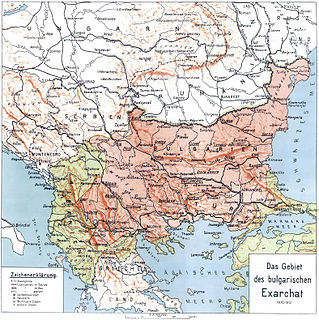 W
WGreater Bulgaria is a term to identify the territory associated with a historical national state and a modern Bulgarian irredentist nationalist movement in the 19th and 20th centuries, which would include most of Macedonia, Thrace and Moesia.
 W
WBundu dia Kongo, known as BDK, is a new religious movement with a political and cultural agenda that is associated with the Kongo ethnic group. It was founded in June 1969 by Ne Muanda Nsemi, who is the group's current leader, and is mainly based in the Kongo Central (Bas-Congo) province in the Democratic Republic of the Congo. The movement supports Kongo nationalism and the creation of an ethnically-Kongo state that would encompass parts of the modern-day Democratic Republic of the Congo, Angola, Gabon and the Republic of the Congo.
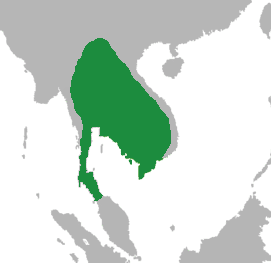 W
WCambodian irredentism is a nationalist movement in Cambodia that refer to the land that used to be part of the Khmer Empire. The irredentist movement in Cambodia is aimed against the control by Thailand, Vietnam and Laos. Irredentist, official and unofficial Cambodian claims on territories viewed by Cambodians as having been under some form of Cambodian sovereignty, are rhetorically tied back to an accused expansionism.
 W
WGran Colombia, or Greater Colombia, was a state that encompassed much of northern South America and part of southern Central America from 1819 to 1831. At the time, the state was known as Colombia. It included present-day Colombia, mainland Ecuador, Panama, and Venezuela, along with parts of northern Peru and northwestern Brazil. The terms Gran Colombia and Greater Colombia are used historiographically to distinguish it from the current Republic of Colombia, which is also the official name of the former state.
 W
WGalicia irredenta or Galicia estremeira, also spelled as Galiza irredenta and Galiza estremeira and also known as Faixa Leste or Franxa Leste, is a term used for all Galician-speaking territories located outside of Galicia. These are all located in Spain, in either Asturias or Castile and León. These territories are sometimes divided into three subregions: El Bierzo, Eo-Navia and As Portelas.
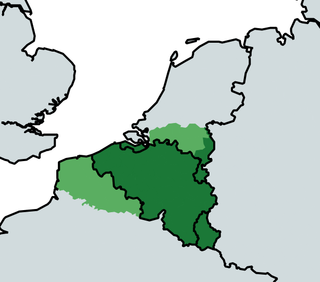 W
WGreater Belgium is a Belgian irredentist concept which lays claim on territory nationalists deem as rightfully Belgian, It usually laid claim to; German territory historically belonging to the former Duchy of Limburg, Dutch Limburg, Zeelandic Flanders and the Grand Duchy of Luxemburg. To a lesser degree they also claimed Dutch North-Brabant and the French Netherlands (Nord-Pas-de-Calais). Shortly after Belgian Independence some groups even proposed a Belgo-Rhine federation.
 W
WGreater Palestine is an irredentist notion used by some Palestinian nationalists seeking to establish a Palestinian nation state over the whole of former Mandatory Palestine. Some Palestine Liberation Organization officials extended the claims in the 1970s and 1980s to include Jordan. The term is contrary to the terms Greater Syria and the Arab homeland.
 W
WGreater Tamil Nadu is an irredentist concept of Tamil nationalism that centers on forming a national homeland for the Tamils by merging the Tamil speaking areas of India proper and Sri Lanka. However such areas also include large Kannada and Telugu speaking populations in the northern part, a Malayalam-speaking population in the southwest and Sinhalese people on the islands. Greater Tamil Nadu was proposed by various Tamil groups such as Naam Tamilar led by S. P. Adithanar in 1958 and the Tamil Nadu Liberation Front (TNLF) and the Tamil National Retrieval Troops (TNRT) in the late-1980s.
 W
WGuayana Esequiba, sometimes also called Esequibo or Essequibo, is a disputed territory of 159,500 km2 (61,600 sq mi) west of the Essequibo River that is administered and controlled by Guyana but claimed by Venezuela. The boundary dispute was inherited from the colonial powers and has been complicated by the independence of Guyana from the United Kingdom in 1966.
 W
WThe territorial dispute between Ecuador and Peru was the source of a long period of intermittent armed conflict between the two countries. This dispute was a consequence of each country's interpretation of what Real Cedulas Spain used to precisely define its colonial territories in the Americas. After independence, all of Spain's colonial territories signed and agreed to proclaim their limits in the basis of the principle uti possidetis juris which accepts the Spanish colonial borders of 1810 as the borders of the new republics. Thus the borders of Gran Colombia which included Ecuador, Colombia and Venezuela would follow the borders of the Viceroyalty of New Granada, and Peru the Viceroyalty of Peru in 1810. However, Peru was not satisfied with this and tried to set the date of her Uti Possitedis to 1824 – a time when Peru was officially independent with territories Peru militarily occupied since 1820.
 W
WGreater Indonesia was a political concept that sought to bring the so-called Malay race together by uniting the territories of Dutch East Indies with the British Malaya and British Borneo. It was espoused by students and graduates of Sultan Idris Training College for Malay Teachers in the late 1920s, and individuals from Sumatra and Java including Mohammad Yamin and Sukarno in the 1950s. Indonesia Raya was adapted as the name of what latter became the Indonesian national anthem in 1924.
 W
WThe Inner Mongolian independence movement, also known as the Southern Mongolian independence movement, is a movement for the independence of Inner Mongolia and the political separation of Inner Mongolia from the People's Republic of China. It is principally led by the Mongolian diaspora in countries like Japan and the United States, and in some European countries.
 W
WThe Kuril Islands dispute, known as the Northern Territories dispute in Japan, is a territorial dispute between Japan and the Russian Federation over the ownership of the four southernmost Kuril Islands. The Kuril Islands are a chain of islands that stretch between the Japanese island of Hokkaido at their southern end and the Russian Kamchatka Peninsula at their northern end. The islands separate the Sea of Okhotsk from the Pacific Ocean. The four disputed islands, like other islands in the Kuril chain that are not in dispute, were annexed by the Soviet Union following the Kuril Islands landing operation at the end of World War II. The disputed islands are under Russian administration as the South Kuril District of the Sakhalin Oblast. They are claimed by Japan, which refers to them as its Northern Territories or Southern Chishima, and considers them part of the Nemuro Subprefecture of Hokkaido Prefecture.
 W
WThe Kuwait Governorate was the 19th governorate of Iraq established in the aftermath of the invasion of Kuwait by Iraq in 1990. It was preceded by the brief puppet state of the Republic of Kuwait. The Kuwait Governorate consisted of most of the occupied Kuwaiti territory, with the exclusion of the northern areas which became the Saddamiyat al-Mitla' District. Saddam Hussein's relative, Ali Hassan al-Majid became the governor of this province.
 W
WLezgistan or Lekia ) may refer to the following:a term occasionally applied to describe the present-day Kurdamir, before the Russian Revolution. an irredentist concept by Sadval separatist organisation which aims a creation of a unified ethno-political entity over the bordering Lezgin-inhabited areas of the Russian Republic of Dagestan and Azerbaijan.
 W
WMayotte is an overseas department/region and single territorial collectivity of France officially named the Department of Mayotte. It is located in the northern Mozambique Channel in the Indian Ocean off the coast of Southeast Africa, between northwestern Madagascar and northeastern Mozambique. Mayotte consists of a main island, Grande-Terre, a smaller island, Petite-Terre, and several islets around these two. Mayotte is the most prosperous territory in the Mozambique Channel, making it a major destination for illegal immigration.
 W
WPan-Mongolism is an irredentist idea that advocates cultural and political solidarity of Mongols. The proposed territory, called "Greater Mongolia", usually includes the independent state of Mongolia, the Chinese regions of Inner Mongolia and Dzungaria, and the Russian republic of Buryatia. Sometimes Tuva, the Altai Republic and parts of Zabaykalsky Krai and Irkutsk Oblast are included as well. As of 2006, all areas in Greater Mongolia except Mongolia have non-Mongol majorities.
 W
WGreater Netherlands is an irredentist concept which unites the Netherlands, Flanders, and sometimes including Brussels. Additionally, a Greater Netherlands state may include the annexation of the French Westhoek, Suriname, formerly Dutch-speaking areas of Germany and France, or even the ethnically Dutch and/or Afrikaans-speaking parts of South Africa, though such variants are mostly limited to far-right groups. A related proposal is the Pan-Netherlands concept, which includes Wallonia and potentially also Luxembourg.
 W
WPan-Islamism is a political ideology advocating the unity of Muslims under one Islamic country or state – often a caliphate – or an international organization with Islamic principles. Pan-Islamism differentiates itself from pan-nationalistic ideologies, for example Pan-Arabism, by seeing the ummah as the focus of allegiance and mobilization, excluding ethnicity and race as primary unifying factors. Pan-Islamism emerged during late-19th century as a global movement for Islamic reform and struggle against European imperialism. The major leaders of the Pan-Islamist movement were the triad of Jamal al-Din Afghani, Muhammad Abduh and Sayyid Rashid Rida ; who were active in anti-colonial efforts to confront European penetration of Muslim lands. They also sought to strengthen Islamic unity, which they believed to be the strongest force to mobilize Muslims against imperial domination.
 W
WPan-Netherlands, sometimes translated as Whole-Netherlands, is an irredentist concept which aims to unite the Low Countries into one state. It is an example of Pan-Nationalism.
 W
WPashtūnistān is a geographic historical region inhabited by the indigenous Pashtun people of modern-day Afghanistan and Pakistan in South-Central Asia, wherein Pashtun culture, language, and national identity have been based. Alternative names historically used for the region include "Pashtūnkhwā" (پښتونخوا) and "Afghānistān" (افغانستان), since at least the 3rd century CE onward. Pashtunistan borders Iran to the west, Persian and Turkic-speaking areas of Turkestan region to the north, Kashmir to the northeast, Punjab to the east, and Balochistan to the south. The region is alternatively called Pakhtūnistān, Pathānistān, or Pashtūnkhwa.
 W
WSaddamiyat al-Mitla' was a district in Basrah Governorate during the Iraqi occupation of Kuwait 1990–1991. The formation of the district was announced on August 28, 1990. The name sought to honour the Iraqi president Saddam Hussein. Whilst the rest of Kuwait was annexed as the 19th governorate of Iraq, the strategic northern parts of Kuwait was annexed as the Saddamiyat al-Mitla' district as part of the Basrah Governorate.
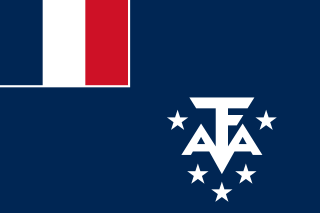 W
WThe Scattered Islands in the Indian Ocean consist of four small coral islands, an atoll, and a reef in the Indian Ocean, and have constituted the 5th district of the French Southern and Antarctic Lands (TAAF), though sovereignty over some or all of the Islands is contested by Madagascar, Mauritius, and the Comoros. None of the islands has ever had a permanent population.
 W
WThe Scottish Jacobite Party was a political party in Scotland. It was registered with the Electoral Commission on 8 July 2005, and launched in Glenfinnan to coincide with the 31st G8 summit and roughly with the 260th anniversary of Bonnie Prince Charlie raising his standard there in 1745.
 W
WGreater Somalia is a concept to unite all ethnic Somalis comprising the regions in or near the Horn of Africa in which ethnic Somalis live and have historically inhabited. The territory historically encompassed British Somaliland, Italian Somaliland, French Somaliland, the Somali Region in Ethiopia and the Northern Frontier District in Kenya. At the present, it encompasses Somalia, southern Djibouti, the Somali Region and Dire Dawa in Ethiopia, and the Garissa, Wajir and Mandera Counties in Kenya.
 W
WThe historic region of Syria is an area located east of the Mediterranean sea. The oldest attestation of the name Syria is from the 8th century BC in a bilingual inscription in Hieroglyphic Luwian and Phoenician. In this inscription the Luwian word Sura/i was translated to Phoenician ʔšr "Assyria." For Herodotus in the 5th century BC, Syria extended as far north as the Halys and as far south as Arabia and Egypt.
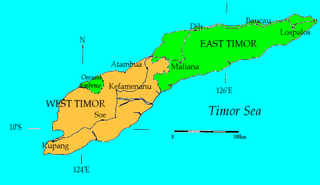 W
WGreat Timor refers to the irredentist concept of a united and independent island of Timor, which is currently divided between the independent state of East Timor and the Indonesian territory of West Timor. The concept of unifying the island has been raised since the mid-20th century.
 W
WTricontinental Chile is a geopolitical concept denoting Chile's unique position with its mainland in South America, Easter Island in Oceania (Polynesia) and the Chilean Antarctic Territory in Antarctica.
 W
WUnited Slovenia is the name originally given to an unrealized political programme of the Slovene national movement, formulated during the Spring of Nations in 1848. The programme demanded (a) unification of all the Slovene-inhabited areas into one single kingdom under the rule of the Austrian Empire, (b) equal rights of Slovene in public, and (c) strongly opposed the planned integration of the Habsburg Monarchy with the German Confederation. The programme failed to meet its main objectives, but it remained the common political program of all currents within the Slovene national movement until World War I.
 W
WThe Lost Lands of Wales, a minor political idea of the mid 1960s, called into question the status of areas along the east side of the England–Wales border which its proponents regarded as Welsh. The idea was propounded by the Lost Lands Liberation League, and related to parts of the counties of Cheshire, Gloucestershire, Herefordshire and Shropshire.
 W
WYemen Region also known as South Arabia is a geographic term denoting territories of historic South Arabia which included All lands between the Gulf of Oman in the east and the Red Sea in the west.
 W
WYugoslav irredentism refers to an irredentism that promotes a Yugoslavia that unites all South Slav-populated territories within it, comprising its historically united territories of Bosnia and Herzegovina, Croatia, North Macedonia, Montenegro, Serbia and Slovenia; merged with territories claimed by Yugoslavists that had not been incorporated within the state of Yugoslavia, including Bulgaria, Western Thrace and Greek Macedonia and in some proposals other territories. The government of the Kingdom of Yugoslavia sought the union with Bulgaria or its incorporation into Yugoslavia. The Socialist Federal Republic of Yugoslavia under Josip Broz Tito sought to create an integral Yugoslavia that would incorporate within Yugoslavia's borders: Greek Macedonia and Thrace, Albania, Bulgaria, at least a portion of Austrian Carinthia or all of it, and for a time beginning in November 1943 had claimed the entire Italian region of Friuli-Venezia Giulia.